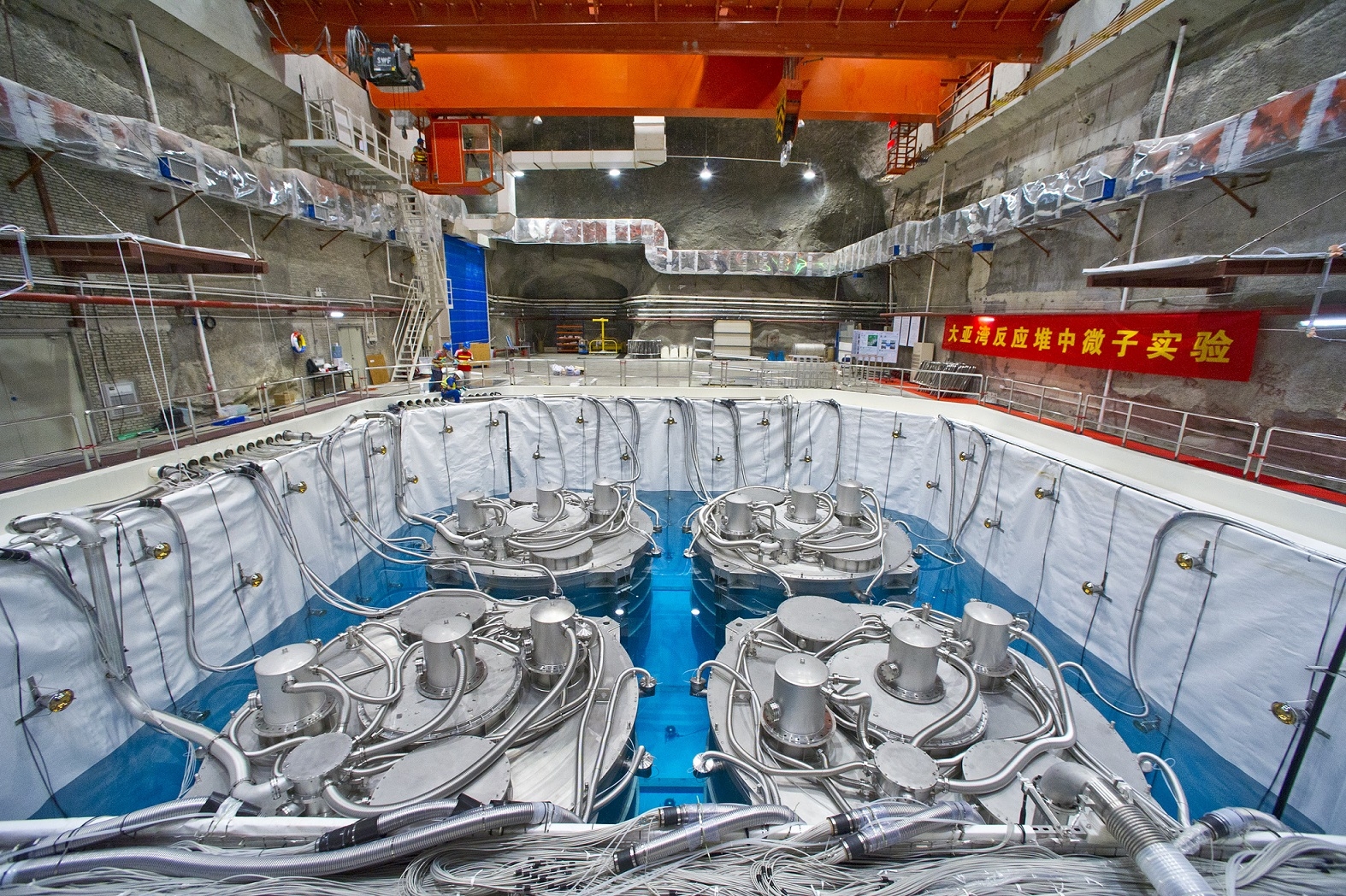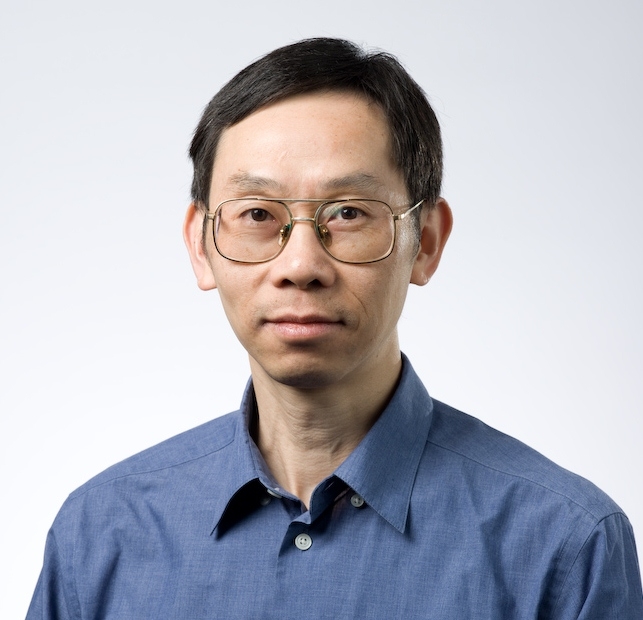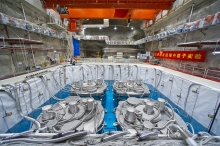CUHK
News Centre
New Results from Daya Bay: Tracking the Disappearance of Ghostlike NeutrinosCUHK-led Hong Kong team and international partners release new result on differences among neutrino masses
Progressing from their discovery of a new mode of neutrino transformation in 2012, which was selected as one of ‘Top Ten Science Breakthroughs’ of the year by Science Magazine, the international Daya Bay Collaboration announced new results today about the transformations of elusive, ghostlike neutrinos, particles that carry invaluable clues about the makeup of the early universe. The latest findings include their first data on how neutrino oscillation – in which neutrinos mix and change into other ‘flavors’ or types, as they travel – varies with neutrino energy, allowing scientists to measure a key difference in neutrino masses known as ‘mass splitting’.
‘Because of their enormous numbers, neutrinos’ yet-unknown masses play a significant role in shaping the structures of the Universe. Our measurement of the neutrino mass splitting is important for both elementary particle physics and cosmology.’ explained Professor Chu Ming-chung of CUHK Physics Department, the Principal Investigator of the Hong Kong team of the Daya Bay Collaboration.
The new results are based on four times the data, with twice the precision, of the first Daya Bay results released last year, which established the value of the third and final neutrino ‘mixing angle’. Mass splitting represents the frequency of neutrino oscillation. Mixing angles, another measure of oscillation, represent the amplitude. Both are crucial for understanding the nature of neutrinos. Understanding the subtle details of these neutrino oscillations and other properties of these shape-shifting particles may help answer some of the most mysterious questions about the universe.
The Daya Bay Experiment is located close to the Daya Bay and Ling Ao nuclear power plants in China, 55 kilometers northeast of Hong Kong. The Daya Bay Collaboration includes more than 200 scientists from six regions and countries. A research team from The Chinese University of Hong Kong (CUHK) and University of Hong Kong (HKU) has been an active member of the Daya Bay Collaboration since its formation in 2004, and Professor Chu from CUHK is the principal investigator of the Hong Kong team.
Professor Chu further explains, ‘There have been great advancements in observational cosmology in recent years, and the large volume of precision data obtained show us that the normal matter that we are familiar with only makes up a small fraction of the energy density of the Universe. Instead, mysterious matters such as neutrinos and dark matter have dominated the evolution of the Universe. Understanding the properties of these ghost particles is now crucial for further advancement in Cosmology.’
Daya Bay measures neutrino oscillation with electron neutrinos – actually antineutrinos, essentially the same as neutrinos for the purpose of these kinds of measurements. Millions of quadrillions of them are created every second by six powerful reactors. As they travel up to two kilometers to underground detectors, some seem to disappear.
The missing neutrinos don’t vanish; instead they have transformed, changing flavors and becoming invisible to the detectors. The rate at which they transform is the basis for measuring the mixing angle, and the mass splitting is determined by studying how the rate of transformation depends on the neutrino energy.
Daya Bay’s first results were announced in March 2012 and established the unexpectedly large value of the mixing angle theta one-three (θ13), the last of three long-sought neutrino mixing angles. The new results from Daya Bay put the precise number for that mixing angle at sin22θ13=0.090 plus or minus 0.009. The improvement in precision is a result of having more data to analyse and having the additional measurements of how the oscillation process varies with neutrino energy.
The energy-dependence measurements also open a window to the new analysis that will help scientists tease out the miniscule differences among the three masses. Precision measurement of the energy dependence should further the goal of establishing a ‘hierarchy’ or ranking, of the three mass states for each neutrino flavor.
Professor Chu will deliver a lecture on ‘Ghost particles and the evolution of the universe’ this Saturday at the Hong Kong Central Library, as part of CUHK 50th Anniversary Fair Public Lecture Series. He will introduce the physics of ghost particles and their roles in some important outstanding problems in cosmology, as well as the Daya Bay Neutrino Oscillation Experiment that a CUHK group of researchers has been actively participating in. Members of the public are welcome. For details, please refer to: http://www.50.cuhk.edu.hk/en/events/highlights.
Four antineutrino detectors submerged in pure water in the Daya Bay Far Hall, each being 5m in height and diameter, all in place in September 2012. The Hong Kong team designed and built a subsystem in each of the detectors.





